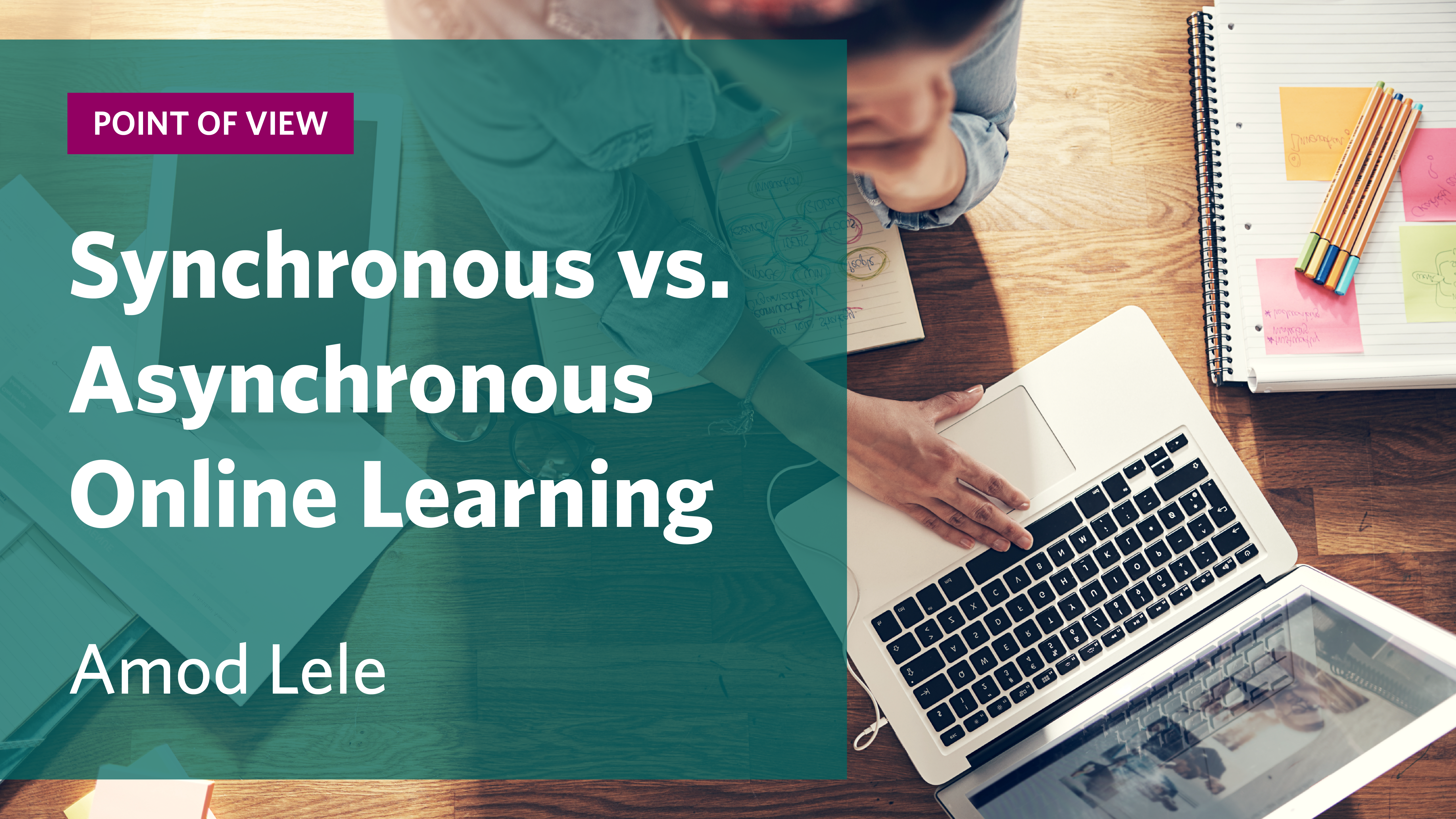Synchronous Vs. Asynchronous: The Biggest Difference

December 2019
The POD Network conference is all about effective teaching, whether or not it involves new digital tools. One of the hotter topics covered this year was online teaching and how to do it well. As we talked about effective online teaching, the biggest topic that came up was the massive difference between synchronous and asynchronous online learning.
This doesn’t look like a big difference – it’s only one letter! – but it’s a difference that makes a huge difference in practice. Many of us concluded that when it comes to teaching well, the difference between synchronous and asynchronous online learning is actually bigger than the difference between synchronous online learning and learning in person.
Defining the Differences
Why? First let’s note what the terms mean: “synchronous” means “at the same time”; “asynchronous” is its opposite. In a synchronous online class, the instructors and the students – however physically far apart they may be, however many time zones might separate them – are still all together at once, talking to each other in real time. In an asynchronous class, they’re not – each participant logs in on their own time when convenient. For busy non-traditional learners, that convenience may be essential. But it also has an effect on teaching quality.
Active Learning
Studies of effective teaching emphasize the importance of active learning: the students shouldn’t just sit and watch the instructor but participate in various ways. Traditional face-to-face classrooms take many approaches to allow this active learning, like Socratic questioning of the students, polling large classes with audience-response systems, or seminar-style discussions where disagreement is encouraged.
And here is the key issue: an instructor can closely replicate all of those active-learning approaches in a synchronous online class, at least one where the technology tools are reasonably sophisticated. In an asynchronous class, one can’t.
In a synchronous online class, the instructor can ask a question of the students, wait for a student to respond, and then immediately ask another question in response, just like in a face-to-face class. In an asynchronous class, there would at least be a major time lag between each of these steps. In a synchronous online lecture, the instructor can ask the students a polling question and adjust the lecture content based on how well the students understand, just like face-to-face. That cannot happen in an asynchronous class, where lectures are prepared in advance. In a synchronous seminar, students can respond to each other’s points in real time, as they would in a face-to-face class. In an asynchronous seminar, discussion – whether on a Blackboard-style text discussion board or a video/audio platform like GoReact or VoiceThread – has to proceed slowly, one step at a time.
The Challenge of Asynchronous Learning
None of this is to say active learning can’t happen in an asynchronous class. It can – including some of the situations I’ve just mentioned, where discussions are staggered over longer intervals of time (as they would be on Facebook or similar social-media platforms). The point is that in an asynchronous class, the context is very different. An instructor who has a successful active-learning approach in person may find that they can transfer that approach to a synchronous online class without great difficulty. For an asynchronous class, the change is much greater – and therefore, so is the challenge.
Boston University’s Educational Technologists provide faculty and academic staff tools to enhance teaching while leveraging available and emerging learning-centered technologies. Learn more about Digital Learning & Innovation.

About the Author: Amod Lele, Manager of Educational Technology, was the Lead Educational Technologist with Boston University’s Digital Learning & Innovation at the time of publication.


